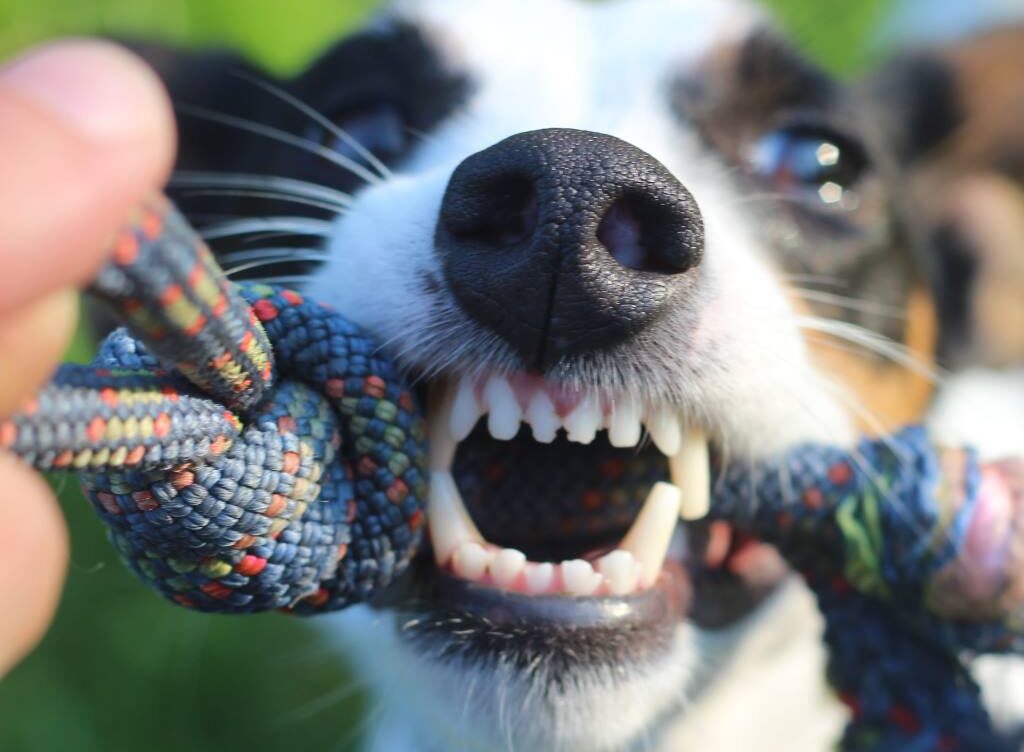
5 Common Bad Behaviors Dog Owners Unknowingly Encourage
Have you ever heard the phrase, “There are no bad dogs, only poorly trained ones”? This couldn’t be more true! When bringing home a new puppy, it’s our responsibility to teach them the house rules—where to go potty, what’s okay to chew, where to sleep, and which behaviors are unacceptable.
Successful training depends on consistency, patience, and positive reinforcement. However, sometimes we unintentionally encourage unwanted behaviors without even realizing it! Below are five common issues dog owners unknowingly reinforce and tips to help break the cycle.
- Encouraging Begging at Mealtime
One of the most frequent complaints from pet owners is that their dog constantly begs for food. Picture this: You sit down to enjoy your meal, and within seconds, your dog is at your feet, staring at you with those irresistible puppy eyes, maybe even whining for a bite. Unable to resist, you give in and share a little of your food.
While it might seem harmless, giving in to begging teaches your dog that whining leads to food. Dogs are quick learners, and once they associate whining with a reward, the behavior will only continue.
How to Break the Habit:
- Feed your dog at the same time you eat to keep them occupied.
- Use a dog puzzle feeder filled with healthy treats to distract them.
- Completely ignore their begging—no eye contact, no talking, no food!
Rewarding Demand Barking
Does your dog bark whenever they want something? Whether it’s a toy stuck under the couch, a walk, or their food bowl being filled, barking can quickly turn into a habit if it consistently gets them what they want.
It’s easy to just give in for the sake of peace and quiet, but doing so teaches your dog that barking gets results.
How to Break the Habit:
- Before granting their request (retrieving a toy, feeding, or walking), make them sit and stay calmly.
- If they bark, ignore them and wait for silence before responding.
- If they continue barking, walk away and try again later.
The goal is to show your dog that barking won’t get them what they want—but patience and calm behavior will.
Encouraging Jumping
Does your dog greet you by leaping up the moment you walk through the door? While it might seem like a sign of affection, jumping can become a nuisance—especially for small children or elderly individuals.
Many owners unintentionally reinforce this behavior by reacting with laughter, excitement, or even petting their dog when they jump.
How to Break the Habit:
- When arriving home, ignore your dog until they have all four paws on the ground.
- Only offer attention and affection once they remain calm.
- Teach an alternative greeting, such as sitting or waiting for a treat.
Pro Tip: Need more guidance? Check out our full article on Tips to Stop Your Dog from Jumping!
Allowing Leash Pulling
Dogs naturally love to explore, and some get so excited on walks that they end up pulling on the leash to get where they want to go faster. If you let them drag you along, they learn that pulling is an effective way to control the walk.
How to Break the Habit:
- Stop walking the moment your dog pulls. Stand still and remain quiet.
- Wait until they stop pulling and give them praise and a treat before continuing.
- Use a front-clip harness to provide better control and discourage pulling.
Consistency is key—over time, your dog will learn that a loose leash leads to rewards, while pulling gets them nowhere.
Encouraging Excessive Licking
Licking is a natural canine behavior, but when it becomes excessive, it could indicate boredom, anxiety, or even a medical issue. Many dog parents unintentionally reward excessive licking with attention, reinforcing the habit.
How to Break the Habit:
- Identify the root cause—whether it’s stress, boredom, or something medical.
- Redirect your dog’s focus with a chew toy or puzzle toy.
- Avoid reacting or giving attention when they start licking excessively.
Want to learn more? Read our guide on the top reasons dogs lick!
